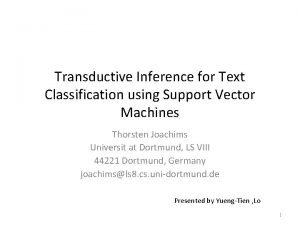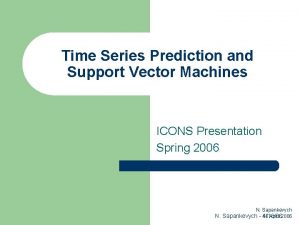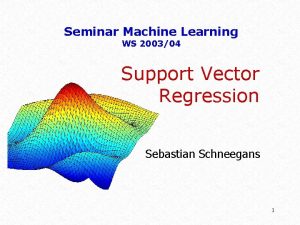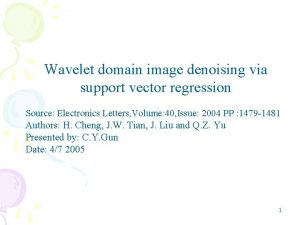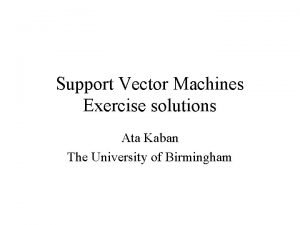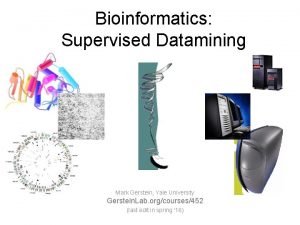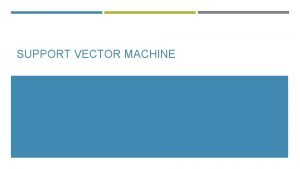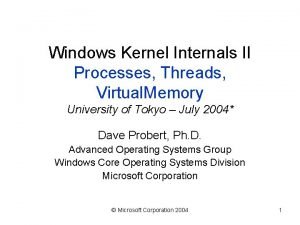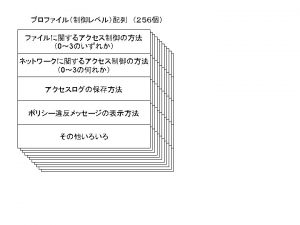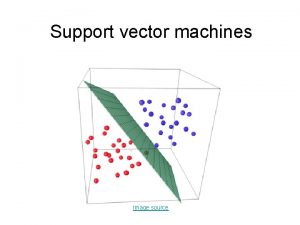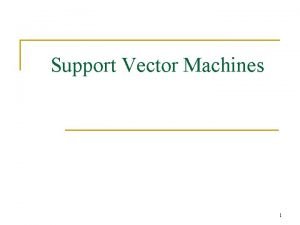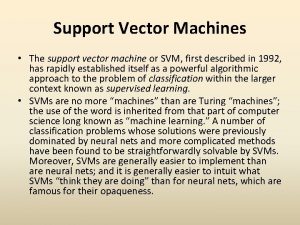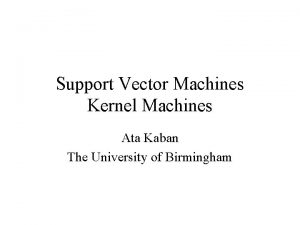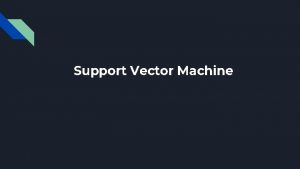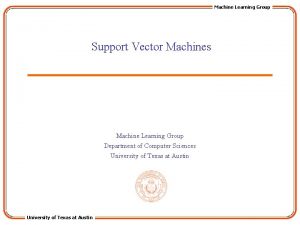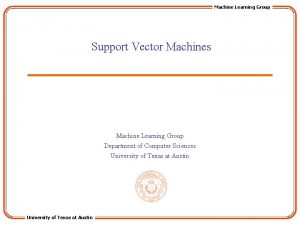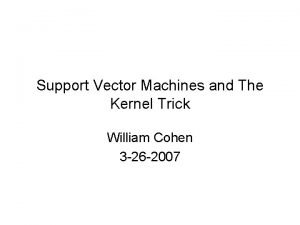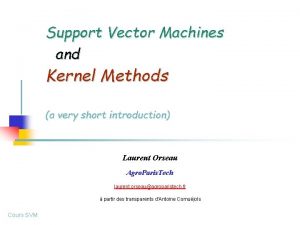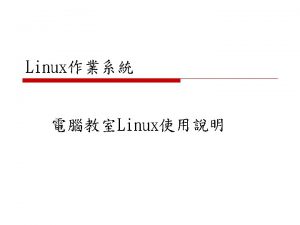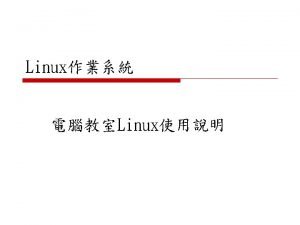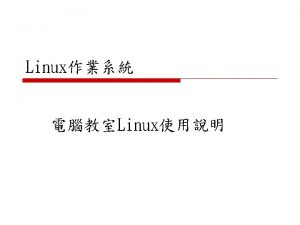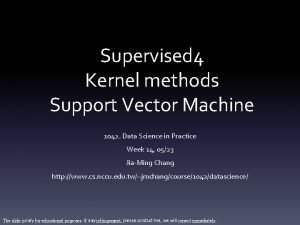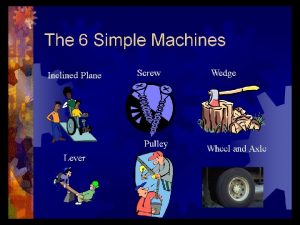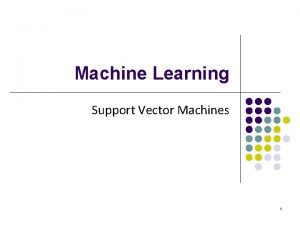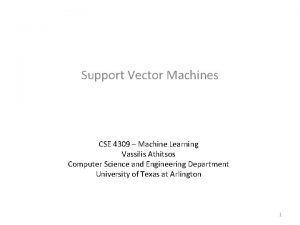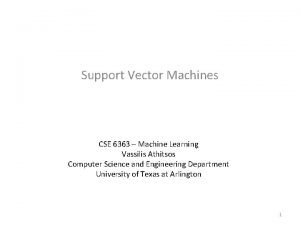CH 13 Kernel Machines A Support Vector Machine
























- Slides: 24

CH. 13: Kernel Machines (A) Support Vector Machine (SVM) -- classifier, forward neural network, supervised learning Difficulties with SVM: i) binary classifier, ii) linearly separable patterns 1

SVM finds optimal separating hyperplane (OSH) With the maximal margin between two support hyperplanes which are formed by support vectors. 2

• Data points: Let the equation of the OSH be : normal vector points toward positive data : distance to the origin e. g. , 3

Let : support hyperplanes Distances between them Then Rewrite Likewise, Margin: 4

Replace Maximizing margin Minimizing subject to ( ) satisfying are called support vectors Lagrange Multiplier Method – converts a constrained to an unconstrained problem. 5

The objective function: The optimal solution is given by the saddle point of , which is minimized w. r. t. w and b, while maximized w. r. t. i. e. , . Through Karush–Kuhn–Tucker (KKT) conditions, L defined in the primal space of w, b, is translated to the dual space of 6


From (B), From (A), The problem becomes 8

After solving by letting find w by (A) . For non-support vectors, From (C), Support vectors are those whose Determine b using any support vector. Consider any support vector : # support vectors 9

Overlapping patterns: the patterns that violate Soft margin: Define the constraint as : slack variables Two ways of violation: 10

Problem: Find a separating hyperplane for which (i) minimal (ii) (iii) minimal (soft error) Lagrange objective function in the primal space, C: penalty factor 11

Through KKT conditions, Dual space: the space of subject to Different from the separable case in that 12

(B) Kernel Machines 13. 5 Kernel Trick Cover’s theorem: Make nonlinearly separable data linearly separable by mapping them from low to high dimensional space e. g. , 2 D 3 D x : a vector in the original N-D space 13

: a set of functions that transform x to a space of infinite dimensionality. Let The OSH in the new space where 14

Substitute (2), (3) into (1), Let : kernel function 15

A kernel function can be considered as a a measure of similarity between data points. • Mercer conditions: requirements of a kernel function 1. Symmetric 2. 3. 4. 16

13. 6 Examples of Kernel Functions i) Linear kernel: ii) Polynomial kernel with degree d : e. g. , d = 2 17

iii) Perceptron kernel: iv) Sigmoidal kernel: v) Radial basis function kernel: 13. 8 Multiple Kernel Learning A new kernel can be constructed by combining simpler kernels, e. g. , 18

13. 9 Multiclass Kernel Machines (K > 2 classes) 1. Train K 2 -classifiers , each one distinguishing one class from all other classes combined. During testing, 2. Train K(K-1)/2 pairwise classifiers 3. Train a single multiclassifier 19

13. 10 Kernel Machines for Regression • Consider a linear model Define constraints: : slack variables Problem: subject to constraints 20

The Lagrangian Through KKT conditions: 21

The dual: subject to 22

(a) The examples that fall in the tube have (b) The support vectors satisfy 23

The fitted line kernel function 24
 Transductive svm
Transductive svm Support vector machine icon
Support vector machine icon Support vector machine regression
Support vector machine regression Father of support vector machine
Father of support vector machine Svm exercises
Svm exercises Support vector machine pdf
Support vector machine pdf Andrew ng support vector machine
Andrew ng support vector machine Structured support vector machine
Structured support vector machine Support vector machine intuition
Support vector machine intuition Linux linux security module m1 support
Linux linux security module m1 support Gears sprockets pulleys
Gears sprockets pulleys How to find a unit vector
How to find a unit vector Vector unitario formula
Vector unitario formula Vector resolution
Vector resolution Vector
Vector Support vector regression
Support vector regression Support vector regression
Support vector regression Example of major point
Example of major point Finite state machine vending machine example
Finite state machine vending machine example Mealy moore
Mealy moore Moore machine
Moore machine Ma=fr/fe
Ma=fr/fe Windows vista kernel
Windows vista kernel Microsoft-windows-kernel-process
Microsoft-windows-kernel-process Block diagram of system kernel
Block diagram of system kernel
